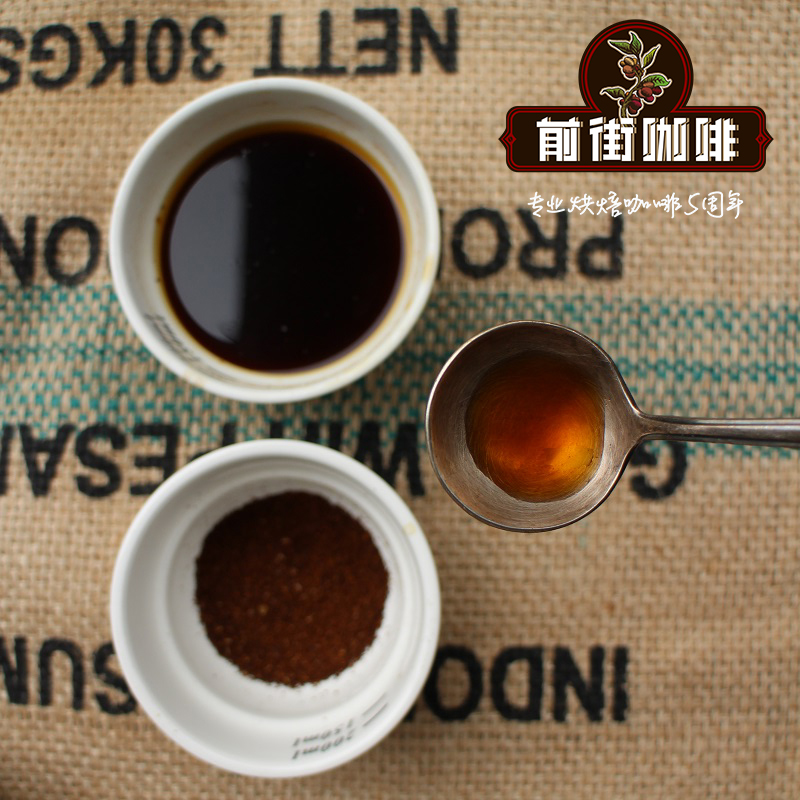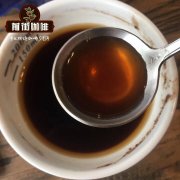You don't have to drink more coffee to understand the flavor inside. What are the requirements for tasting coffee?

Professional coffee knowledge exchange more coffee bean information please follow the coffee workshop (Wechat official account cafe_style)
The American Fine Coffee Association (SCAA), the symbol of the boutique coffee industry, designed the "Coffee Flavor Wheel" (Coffee Taster's Flavor Wheel), which was updated for the first time in 21 years at the beginning of this year. The revision of the new edition of Flavor Wheel is based on the World Dictionary of Coffee sensory Research (The World Coffee Research Sensory Lexicon). This masterpiece brings together the wisdom of dozens of experts and scholars from different fields such as sensory science, coffee procurement and coffee roasting. With the coordinated guidance of SCAA and the cooperation of the World Coffee Research Association (WCR), experts updated and adjusted the Flavor Wheel for the first time. This is the largest special study on coffee taste in human history, and the taste types and technical terms covered by "Flavor Wheel" have been effectively supplemented. This new "flavor wheel" will completely subvert the overall development of the coffee industry and the application of coffee taste.
Yes, any cafe that claims to be a boutique will have a picture mounted on a plaque on the wall. It looks like a tall picture.
But can you read it? Do you know what it does? Without a manual, I can't understand it at all.
In fact, the flavor wheel doesn't make more sense until you learn to interpret the flavor of a cup of coffee more accurately, because most people don't know why to taste a cup of coffee and how to taste it. The flavor wheel can better help us build a memory bank of coffee flavor, help us distinguish the taste of coffee, and distinguish between good coffee and bad coffee.
99% of our happiest times come from our first experience.
Before we taste the boutique coffee for the first time, what we need to understand is:
For taste training or memory, improve our discrimination ability. This is the result of the joint operation of vision, smell and taste. While you have a tiger in your heart, let the tiger in your heart learn to sniff the rose.
So, here comes the question again: what are the requirements for tasting coffee?
There are always a lot of mandatory requirements, such as many people who have been there to tell you, just drink more. Drink, drink, vomit, throw up and then continue to drink, endless drinking can only say that you think too much.
The truth is, keep drinking and remembering. It takes a process of accumulation. The so-called accumulation process is also a painful training process, spending a lot of money, using a lot of time, with a certain amount of quantity to achieve a qualitative leap.
And this high-end picture helps us remember, and helps us express it in more professional terms.
1. Aroma
Smell is a volatile substance, invisible, can not be touched or seen, can only approach it and feel it. Remembering the smell of your surroundings is an exercise that needs to be accumulated in daily life. Usually, we should consciously remember the smell of the surrounding living environment: tarmac roads, gardens, woods, seasoning cans in the kitchen, vegetable markets, and so on. The purpose of this exercise is to classify all kinds of aromas-floral, fruity, nutty, balsam, scorched odor, etc. Finally, you can understand the common characteristics of each odor type.
Memory is the persistence of psychology in time. In the process of tasting, no matter perception, discrimination, identification, and comparison, memory is inseparable from memory.
The brain receives information ➡️ for comparison, ➡️ analysis of ➡️ memory (the whole process)
This kind of taste memory training is very useful, it can turn the smell you smell into some kind of scene. Set up your own taste memory bank. For example, when you smell the aroma of Yega Xuefei, you will think of walking in the primeval forest, filled with the fragrance of flowers, the sweetness of fruit, and even the sour feeling of lemon.
Memory of the smell of specific objects: this exercise requires blindly smelling various objects with your eyes closed, and then classifying them. For example, the practice of fruity. We collect all kinds of fruits, smell them first, and try to remember them. Then randomly select a fruit blindfolded, first classify it: is it white fruit? Red and black fruit? Or dried fruit? Then it will be specific to what kind of fruit it is and what state it is in: fresh? Mature? Overripe and rotten? Wait. Even constantly increase the types of odors, cross, mix a variety of odors, can help tasters learn to identify various odors. There is already a very specific induction and classification in this latest flavor wheel.
Second, sense of taste
As everyone's preference for taste varies greatly, so does their acceptance. We can taste a taste, but we can't describe it accurately.
On the other hand, the flavor wheel classifies all the taste systems perceived by human beings in an imaginary way, and with practice, it can clearly perceive the tiniest differences among all tastes.
Our tongues have two kinds of "receivers":
The first kind: taste buds. It covers the whole tongue and can be used to taste food (drink).
The second kind: taste. It is sensed through the peripheral nerves above our mouth and tongue.
Taste-the smooth and astringent taste of the entrance. Smooth (high quality, fibrous), astringent (polyphenols). Body (what we often call caffeine thickness) is mainly reflected by the touch caused by the oil and fiber of coffee insoluble in water. The more the content, the more viscous or smooth it is. Astringency, contrary to smoothness, is the roughness of polyphenols (water-insoluble molecules in coffee beans) in the mouth, an unsmooth touch.
The smooth and thick taste of coffee is a kind of colloid formed by oily proteins, fibers and other tiny suspensions that do not dissolve in water, forming a sense of touch in the mouth.
Astringency in wine comes from tannins. However, coffee beans contain almost no tannic acid, which exists only in trace amounts in the pericarp of coffee. The astringency of coffee mainly comes from the degradation of "chlorogenic acid" chlorogenic acid contained in raw beans into "dicaffeoylquinic acid" Dicaffeoylquinic acid during roasting, which is a bitter and sour barrier, but a powerful antioxidant.
END
Important Notice :
前街咖啡 FrontStreet Coffee has moved to new addredd:
FrontStreet Coffee Address: 315,Donghua East Road,GuangZhou
Tel:020 38364473
- Prev

Don't regard the SCAA standard as the only biblical coffee flavor wheel.
Professional coffee knowledge exchange more coffee bean information please follow the coffee workshop (Wechat official account cafe_style) SCAA coffee flavor round SCAA? The full name of SCAA is Specialty Coffee Association ofAmerica, which is translated as American Special Coffee Association or American Fine Coffee Association in Chinese. SCAA is the world's largest coffee trade association, is a focus on excellence
- Next

Coffee Seven basic Coffee tasting lessons hand-made coffee boutique coffee
Professional coffee knowledge exchange more coffee bean information Please follow the coffee workshop (Wechat official account cafe_style) Coffee lovers can not forget its taste, do not drink a cup every day, feel lethargic all day. For people who drink coffee for the first time, most of them taste bitter. In fact, coffee also tastes sour and sweet. Next, let's taste the seven flavors of coffee with you. Single
Related
- How did the Salvadoran coffee industry develop in Central America?
- What exactly does the golden cup extraction of coffee mean?
- The Origin of Coffee flower
- [2023 Starbucks World Earth Day] there are more meaningful things besides free Starbucks coffee!
- What kind of coffee is there in Spain? 9 Flavors of Spanish Coffee
- Aromatic African coffee| Kenya's coffee culture and historical production area
- Liberica Coffee Bean knowledge: the characteristics of Liberian Coffee beans of the three original species of Coffee beans
- The origin and formula of Spanish latte introduces the taste characteristics of Bombon coffee in Valencia, Spain.
- How to adjust the solution of over-extracted coffee
- What is the tasting period of coffee beans? What is the period of coffee and beans? How should coffee wake up and raise beans?

